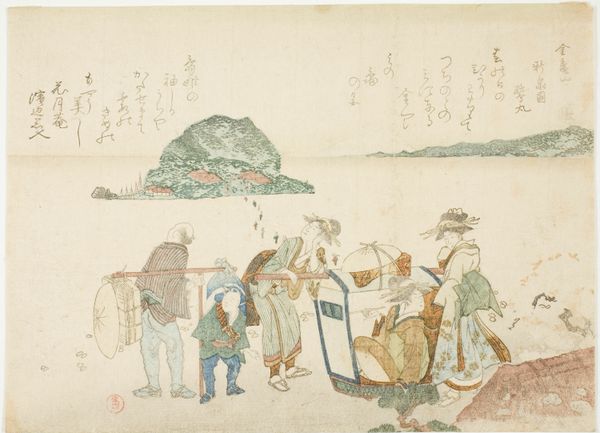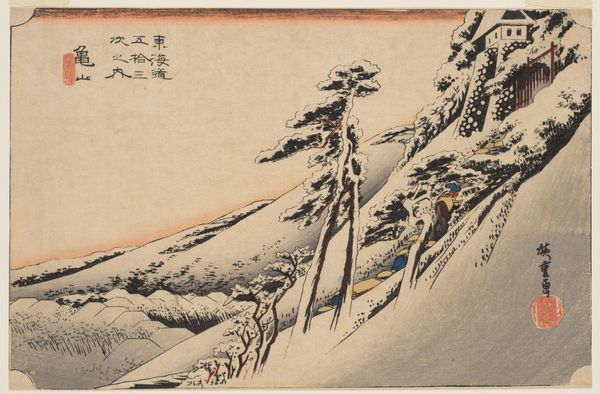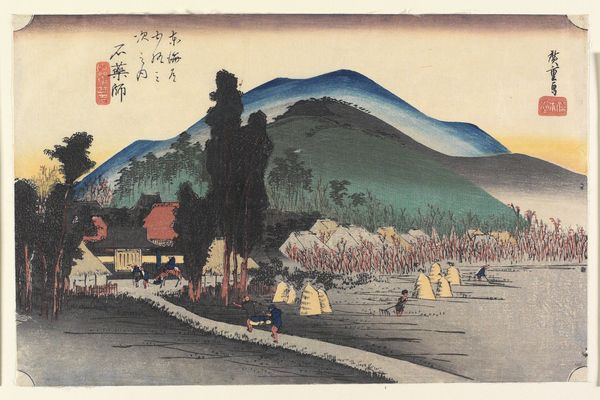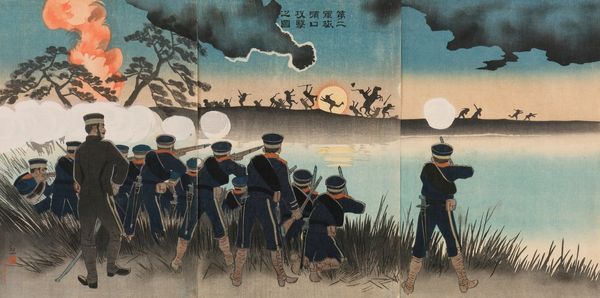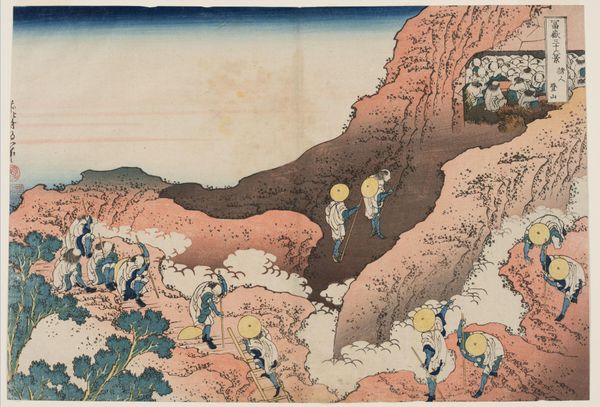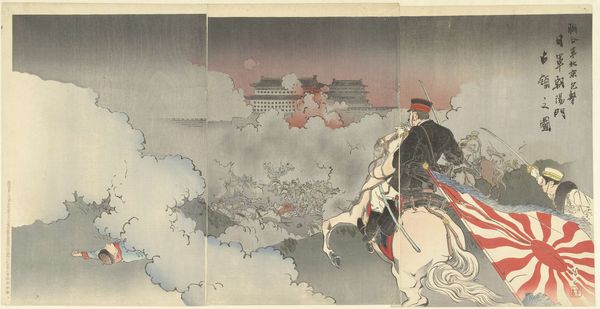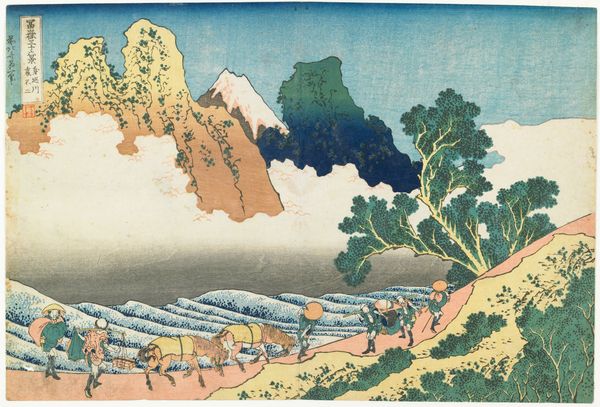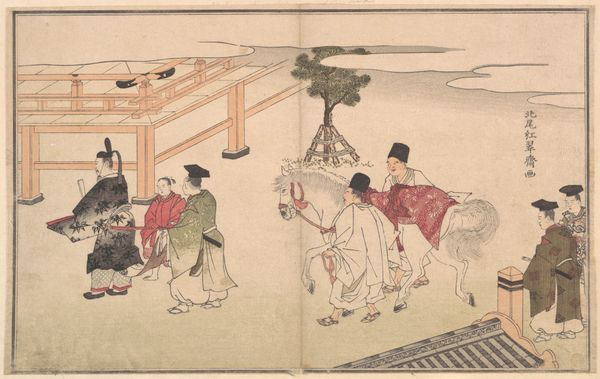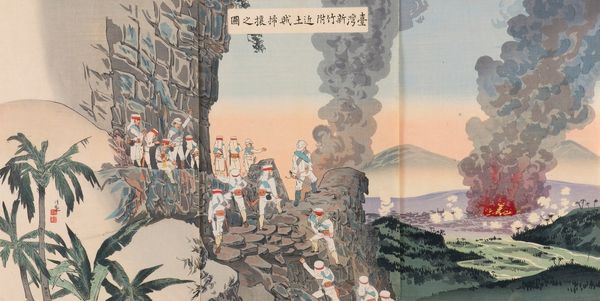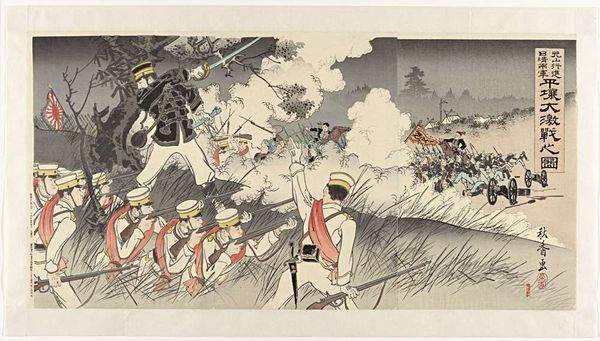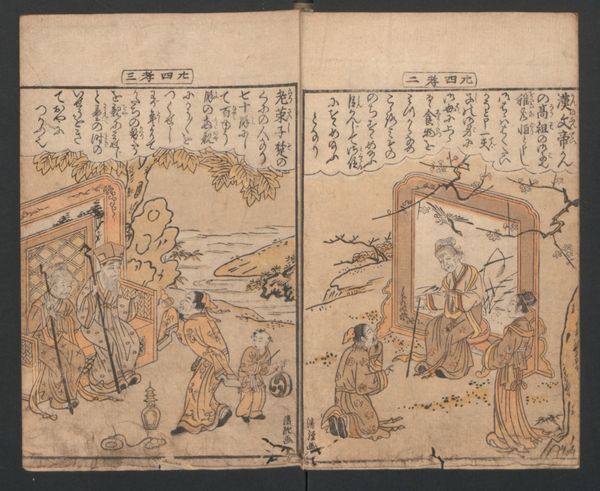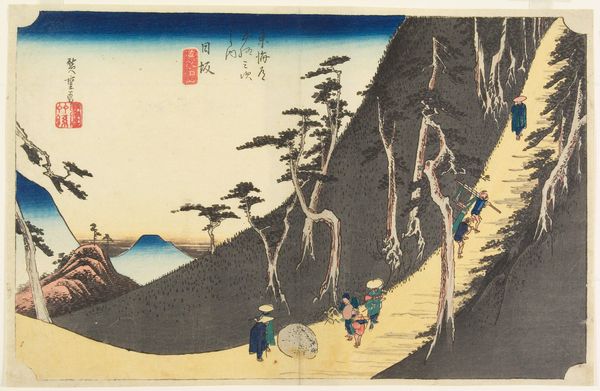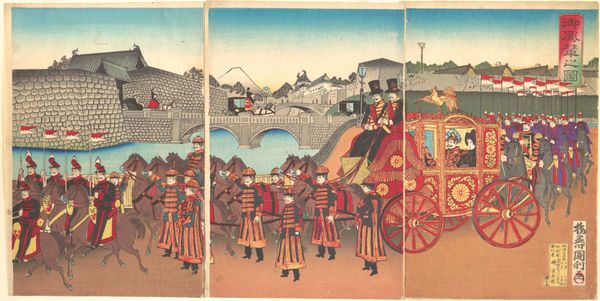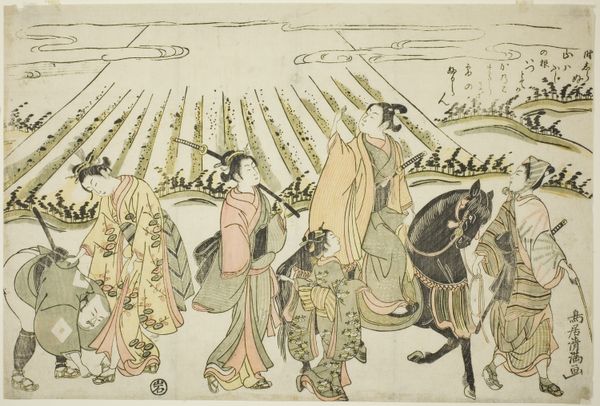
De grote slag bij Shaho is goed te volgen vanaf het hoofdkwartier van ons leger Possibly 1904 - 1915
0:00
0:00
watercolor
#
asian-art
#
landscape
#
watercolor
#
watercolour illustration
#
watercolor
Dimensions: height 354 mm, width 700 mm
Copyright: Rijks Museum: Open Domain
Curator: Welcome. Here we have “De grote slag bij Shaho is goed te volgen vanaf het hoofdkwartier van ons leger,” or “The Great Battle of Shaho Can Be Easily Followed from Our Army Headquarters," believed to have been made between 1904 and 1915 by Biho. It’s a watercolour piece currently held at the Rijksmuseum. Editor: There’s an odd tranquility to it for a battle scene, wouldn’t you say? The muted tones, the soft edges. Almost like a faded memory or a dream. Curator: Yes, despite depicting a rather intense battle, it has this feeling of distance and observation. You have these officers in the foreground observing the battle in the distance. They're detached, giving a sense of control. Editor: Control is definitely the word that comes to mind. The hierarchy of materials speaks to me here. There are the carefully rendered uniforms and the way those forms interact, and against them are broad strokes of the landscape, almost as an afterthought. Is it meant to show military might or a delicate dance of color? It seems at odds. Curator: It might be capturing the tension inherent in that kind of strategic vantage point, a simultaneous feeling of power and vulnerability. The mountain, as a symbol, suggests permanence, while the ephemeral watercolour might remind the viewer that dominance is temporary. Perhaps the choice of watercolour medium itself conveys the uncertainty of war. Editor: You’ve got me thinking about the production of propaganda. Watercolors were a commercially available material, readily at hand for creating visual messages. Could this have been used to communicate something particular back home, or to portray the war effort through rose-tinted glasses? Curator: That's a fascinating perspective. The battle becomes something aestheticized. Perhaps Biho wanted to impart a specific cultural memory: an event witnessed but not entirely experienced by its supposed commanders, filtered through layers of aesthetic decisions, both visible and obscured in layers of semi-translucent pigments. Editor: Yes, so even with images, we have to unpack those choices. This piece demonstrates how an image, seemingly straightforward, is woven with threads of materials, contexts, and possible intentions. Curator: Exactly. We've looked at this serene image that attempts to present the detached and objective experience of the leaders far removed from actual warfare, with its soft wash of color. It's both detached and quite stirring.
Comments
No comments
Be the first to comment and join the conversation on the ultimate creative platform.
